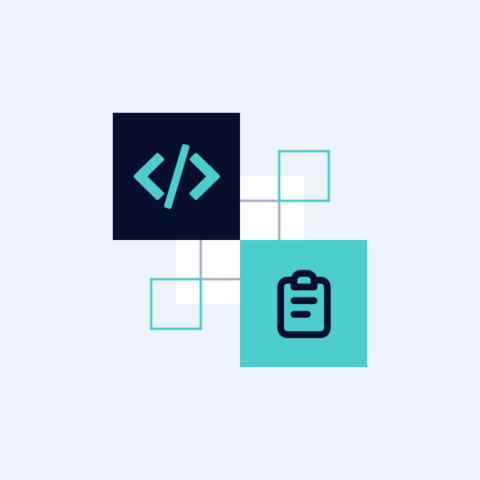The work of backend developers forms the invisible backbone crucial for any tech-driven business's survival and growth. These developers wield programming languages and databases like strategic assets, enabling seamless, secure, and dynamic digital experiences. From e-commerce to mobile apps, their code underpins critical operations and user interactions.
Yet hiring backend developers who master Python, Java, or PHP and excel at problem-solving and collaboration can be daunting. Businesses aiming to harness this expertise face a competitive landscape in which identifying and attracting these architects to join their engineering teams requires insight and strategy.
What Is Back-End Development?
Back-end development is the powerhouse behind web applications, operating unseen to power the user interface. It involves building and maintaining the server-side technology. This includes managing databases, servers, and applications using programming languages such as Python, Java, Ruby, and PHP and tools like MySQL and Oracle. Without it, you're left with static HTML pages devoid of dynamic interaction or real-time data processing.
This development tier is crucial for projects demanding active server-client interactions—think e-commerce platforms, content management systems, and mobile app backends where data storage, retrieval, and processing are paramount. It allows for personalized user experiences, real-time content updates, and secure online transactions.
In business terms, back-end development means leveraging a digital framework that supports growth through efficient data handling and robust application performance. It ensures that web applications are not only functional but also scalable and secure.
What Does a Backend Developer Do?
A backend developer is an architect and programmer behind the scenes, constructing and maintaining the technology that powers websites and applications from the server side. They maintain the digital product's core logic, database interactions, application integrations, and server operations smoothly and efficiently. They create scalable, secure back-end architectures that support dynamic front-end functionalities.
Key responsibilities of a back-end developer include:
- Database management: Designing, implementing, and maintaining databases to store and retrieve data efficiently
- Server scripting: Writing server-side application logic in languages like Python, Ruby, or Javascript to handle business logic
- API development: Creating APIs that front-end developers can use to connect client-side applications with server-side data and functions
- Security measures: Implementing security protocols to protect data and transactions against threats
Backend developers collaborate closely with frontend developers to integrate server-side functionalities with user-facing elements. They also work alongside project managers, quality assurance teams, and occasionally network administrators within a larger development team framework.
Backend Engineer vs. Backend Developer
Backend software engineers design and maintain server-side web application infrastructure. They focus on system architecture across various technologies for scalability, security, and integration. This requires a deep understanding of system architecture, often leading their career path toward broader responsibilities. In contrast, backend developers concentrate on coding within frameworks like Node.js or Django, implementing functionality that powers applications.
While engineers are involved in architectural decisions and system design, developers execute these plans through code. The distinction is also reflected in career trajectory and compensation, with engineers typically commanding higher salaries due to their expansive role.
Backend Developer Skills and Qualifications
To secure a top-tier backend developer, focus on identifying candidates with a balanced mix of soft, hard, and technical proficiencies. These professionals must have technical prowess and interpersonal skills suited for collaborative development environments.
Soft Skills
Some soft skills to look for when hiring a backend developer include:
- Problem-solving skills: Critical for navigating complex software challenges
- Communication skills: Essential for articulating technical issues and solutions clearly
- Teamwork: Crucial for the integrated nature of development projects
- Time management: Key to managing multiple facets of development projects efficiently
- Attention to detail: Code quality, functionality, and security standards must be met without compromise
Technical Skills
Technical skills backend candidates should possess include:
- Programming languages: Mastery of programming languages is fundamental. The choice of language often aligns with project specifics and organizational tech stacks.
- Databases: A deep understanding of database management systems is vital for data manipulation and storage solutions.
- Version control systems: Proficiency in version control tools is crucial for tracking changes in codebase and collaborating on software projects.
- Frameworks and libraries: Familiarity with programming frameworks accelerates development by providing a structured way to build robust applications.
- APIs: Competence in designing and developing RESTful APIs is essential for building scalable web services that interact seamlessly with front-end systems.
Additional Qualifications
While a degree in computer science can provide a strong foundation, practical experience often takes precedence. Demonstrated expertise through a portfolio of projects can be more telling than academic credentials alone. However, certifications related to specific programming languages or technologies can bolster a candidate’s qualifications.
Employers should assess soft and technical skills using coding tests, skills assessments, and behavioral interviews. Probe candidates for not only the requisite technical expertise but also cultural fit to thrive within your development team.
Tools and Technologies Used in Back-End Development
Programming languages like Python, Java, Ruby, PHP, Go, and Node.js are indispensable for writing server-side code and constructing APIs. Database choice also plays a critical role in data management. Databases may be SQL (MySQL, PostgreSQL, Oracle) for structured data and complex transactions or NoSQL (MongoDB, Cassandra) for unstructured data and scalability.
Other tools bolster productivity, functionality, integration, automation, or a combination.
- Frameworks such as Django, Spring Boot, Ruby on Rails, and Express.js streamline development with pre-built components.
- Understanding RESTful APIs is critical to building scalable applications that interact seamlessly across platforms.
- Proficiency in Git reflects a developer's ability to collaborate and manage code versions efficiently.
- Familiarity with cloud platforms (AWS, Azure) showcases competence in deploying scalable applications.
- Knowledge of DevOps tools like Docker and Kubernetes signifies an ability to enhance the software development lifecycle.
How Much Does It Cost To Hire Backend Developers?
In the U.S., a mid-level backend developer's salary can average from $76,000 to $142,000 annually. This figure varies significantly with experience: Junior developers earn less, while seniors with over eight years of experience command much higher salaries. Geographic location and specific skills also influence these numbers.
In addition, in-house developers typically receive higher overall compensation with benefits and perks. In contrast, freelance or contract developers work on a project or hourly basis without long-term commitments. Nearshoring offers cost-effective solutions with rates varying by region, as remote global employees’ salaries depend on their local economic conditions.
When evaluating the cost of hiring back-end development talent, it’s essential to consider all aspects of developer compensation beyond base salary. Use Revelo’s Tech Team Budget Calculator to gain a deeper understanding of the costs involved.
Tips for Hiring Dedicated Backend Developers
Finding the right backend developers requires a mix of strategic searching and insightful evaluation. Start by clearly defining your project requirements, then use technical assessments and soft skill evaluations to identify candidates with the right coding proficiency and fit the team dynamic.
Define Your Needs
Before jumping into the hiring pool, pinpoint exactly what your project entails and the specific skills it requires. This clarity will help you filter candidates whose experience with Python, Java, Ruby, PHP, Node.js, or other relevant languages aligns with your project's demands. Understanding whether you need expertise in web development, app development, or both can significantly narrow down your search.
Review Portfolios and Code Samples
A developer's portfolio is a window into their craftsmanship. Dive deep into their past projects to evaluate their proficiency with databases like MySQL or MongoDB and frameworks like Django or Ruby on Rails. Code samples can reveal not just technical ability but also problem-solving skills and attention to detail.
Utilize Online Platforms
Platforms like GitHub or Stack Overflow offer insights into candidates' coding prowess and community engagement. A strong presence on these platforms often indicates a dedicated developer who stays updated with current trends in software development.
Conduct Technical Assessments
Coding tests tailored to your project’s requirements can demonstrate a candidate’s practical knowledge of server-side programming and APIs. Incorporate scenarios that require interaction with databases (Oracle, PostgreSQL) to assess how they approach data management problems.
Assess Soft Skills
Ask behavioral interview questions to gauge communication skills and teamwork ability. It’s crucial that back-end developers can articulate complex ideas clearly to front-end developers and other team members for seamless collaboration.
Cultural Fit
Discuss scenarios the potential hire may encounter on the job to verify that they share your company's values. This will help you assess whether they’ll mesh well with your organizational and engineering team culture.
Offer Competitive Compensation
Do market research to understand the competitive rates for backend developer roles requiring similar skill sets (e.g., programming languages, database management). Offering an attractive salary package, including benefits like health insurance, ensures you attract high-quality talent.
Consider Remote Hiring
Expand your search beyond local talent to unveil candidates with specialized skill sets essential for high-quality server-side development projects. Over 80% of developers perform their tasks remotely half the time—and this preference won’t die down soon.
Invest in Employer Branding
Actively showcase your company's culture, values, and commitment to employee growth and satisfaction on social media, your website, and through employee testimonials. Doing so positions yourself as an employer of choice for top backend developers.
How to Write a Job Description for Backend Developers
The best talent responds to the most attractive bait: a compelling job description. This document isn't just a role outline but a reflection of your company’s values and commitment to innovation and excellence. To stand out, emphasize the role's impact on your organization's larger goals, detailing how a candidate's contributions will drive success. Clarity, specificity, and insight into your company culture are key to drawing in professionals who not only have the technical expertise but also align with your team’s ethos.
Depending on project complexity and responsibilities, determine whether you need an entry-level, mid-level, or senior developer. Entry-level roles are ideal for projects with room for learning and growth under guidance. Mid-level developers bring proven skills to more complex projects requiring minimal supervision. Senior roles demand deep technical knowledge and leadership qualities suitable for overseeing critical projects and managing teams.
Key sections of a backend developer job description include:
- Required qualifications: Specify degrees or certifications preferred, highlighting any essential industry experience. For instance, "Candidates should possess a Bachelor's degree in Computer Science or equivalent experience in backend development roles."
- Desired skills and traits: In addition to hard skills like programming languages (e.g., Python, Java) and familiarity with databases (e.g., MySQL), emphasize soft skills such as problem-solving abilities and teamwork.
- Job responsibilities: Detail the core duties succinctly to set clear expectations. For example, "Successful candidates will develop robust APIs, manage database schemas efficiently, and ensure seamless data integration with front-end technologies."
- Benefits: A competitive benefits package can be a significant draw. Highlight health insurance options, retirement plans, wellness programs, or remote work flexibility to appeal to top candidates seeking both professional growth and work-life balance.
- Company information: Share insights into your company’s mission, values, culture, and achievements. A glimpse into your organization's environment helps potential applicants gauge cultural fit. For example, "At [Company], innovation drives us forward. We value creativity, collaboration, and commitment to excellence."
- Additional sections: Adding sections that cover team structure or highlight exciting upcoming projects can further entice prospective candidates—these optional sections showcase opportunities for impact within dynamic teams on innovative initiatives.
Remember: If you expect applicant resumes to shine, your job description needs to set the standard.
Interview Questions for Backend Developers
A well-rounded interview strategy includes questions designed to probe deep into a candidate’s problem-solving abilities, teamwork capacity, leadership potential, and technical acumen.
Example Technical Question
"Can you describe a time when you had to optimize a database query for performance? What was the outcome?"
This question assesses technical expertise in database management and performance optimization. It reveals the candidate's approach to problem-solving and their ability to enhance application efficiency.
Example Soft Skill Question
"How do you stay updated with new programming languages and frameworks?"
Asking this highlights a candidate’s commitment to continuous learning and adaptability. Responses should illuminate the resources they use for learning, and showcase their proactive approach.
Example Leadership or Teamwork Question
"Describe your experience working on a project within a cross-functional team. How did you handle conflicts?"
This inquiry sheds light on interpersonal skills, teamwork, and conflict-resolution strategies. Answers can indicate how well they will mesh within your team dynamics.
Hire Backend Developers With Revelo
Revelo streamlines the hiring process and expands your development team by connecting your business with top-tier backend developers from Latin America. Our candidates are meticulously vetted for their technical abilities, soft skills, and English proficiency, ensuring a perfect fit for your projects. Revelo handles all aspects of onboarding, from payroll and benefits administration to taxes and local compliance—plus time-zone-alignment.
Contact Revelo to effortlessly enhance your team with skilled backend developers.




